- Rule, Britannia, no more?
- Unpopular Opinions: US Quadball Cup 2023
- Proven Contenders: University of Virginia
- Proven Contenders: Rutgers University
- Proven Contenders: University of Michigan
- Proven Contenders: Creighton University
- Different Perspectives: A Look Inside USA Ultimate
- Antwerp QC, Much of Belgian Core, Leaves Competitive Quidditch
A Diamond in the Rough: A&M finishes on Top of Crowded Field
- Updated: February 10, 2014

Two week ago, 14 teams competed for the coveted Diamond Cup trophy, the Southwest Region’s premier buildup event to Regionals. Five teams in our top 10 were part of the field, but, when the dust settled, the Texas A&M Aggies took the trophy home for the second time with an impressive run through bracket play. Rather than breakdown the tournament game-by-game, we’ll look at the eight quarter-finalists one at a time, discussing the impression they made at Diamond Cup and what their future prospects look like.
Texas A&M
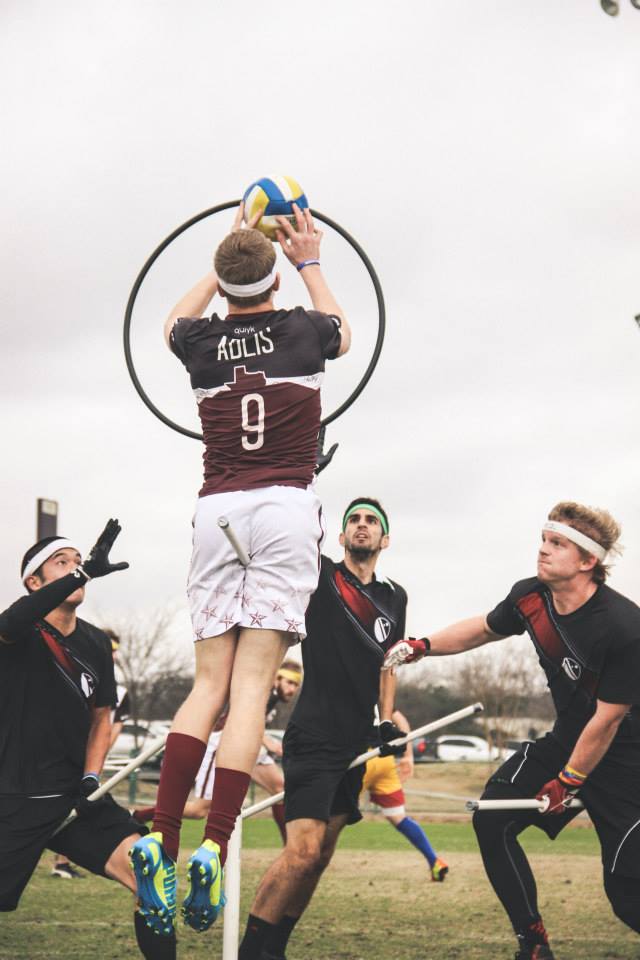
While slow starts plagued the Aggies all day, no one was able to truly contend with their precision offense. Credit: Lauren Carter
This weekend, the Aggies proved they are the best of the best at all facets of the game. The quaffle players, led by Drew Wasikowski and Kifer Gregoire, were like a well-oiled machine. This machine, however, did take a little time to get going at the beginning of many of their games. The Lost Boys, Lone Star and Baylor all took advantage of these slow-starts, and there were a few times at Diamond Cup where it didn’t look too good for the Aggies. Texas A&M was able to come back from 30-point deficits and go on runs that put them out of snitch range, and while showing that come-from-behind skill is a positive, they shouldn’t have needed it. If A&M’s slow starts continue, they could end up falling too far off the pace to turn things around.
Becca Dupont was unsurprisingly a key player for her team, and was absolutely on-fire behind the hoops, skirting her defenders and exploiting that for numerous goals. Joe Wright also shined, and while his name has regularly gone under the radar, he is one of the fastest players on A&M, with one of the hardest and most deceptive cutting ability in the open field.
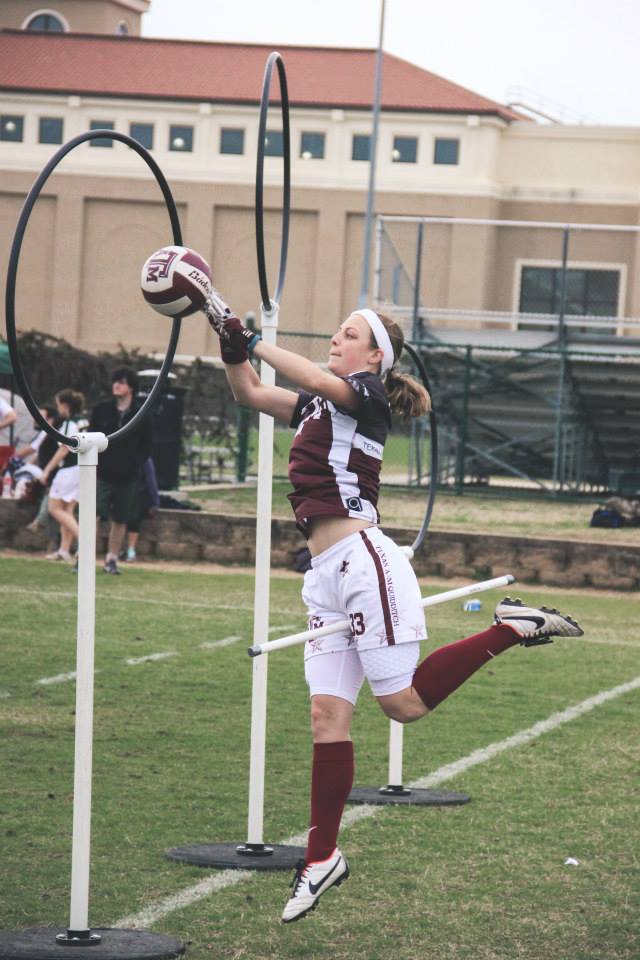
With another phenomenal performance, Becca DuPont is deservedly being mentioned amongst the very best female chasers. Credit: Lauren Carter
With the loss of Gregoire and Polanco, TAMU has had to replenish their male beater corps, adding veteran Austin Potts back into the mix. Together with Fry and Faulhaber, A&M was one of two teams who limited the Lost Boys’ aggressive beater strategy in San Marcos. If they can continue to improve, this team is looking at a potential regional and even World Cup title in the near future.
Baylor University
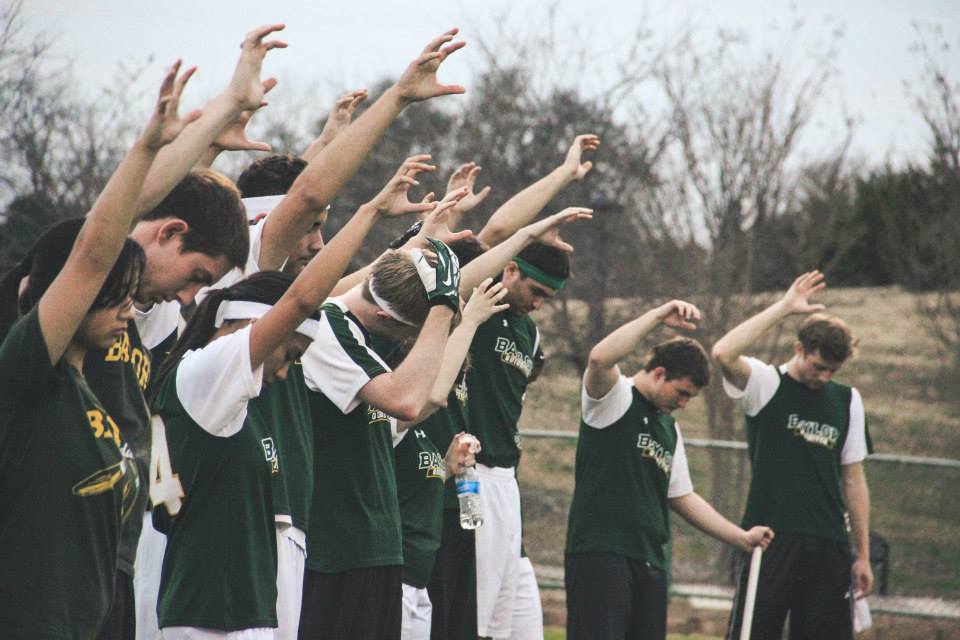
No one plays team defense quite like the Bears, who dominated Texas on their way to a second place finish. Credit: Lauren Carter
After a disappointing finish at Breakfast Taco, many people questioned the Bears’ ability repeat their impressive 2012-2013 season, which included a Southwest Regional title and a trip to the World Cup VI semifinals. But the Waco side proved the world wrong with a finals run at Diamond Cup that included a blowout of the reigning World Champion Texas Longhorns in the semifinals and a tight match decided by a snitch grab in the finals against the Aggies.
Baylor’s results earlier this season were the product of multiple injuries and absences, many of which composed their veteran beating core. At Diamond Cup, Brittany Ripperger and Chris Rhodes were still out, which definitely caused problems later on the tournament with depth. Most specifically, it forced Baylor into a two-male beater set starting in the overtime of the Lost Boys game, which, paired with their unique defense and remarkable female chasers, allowed Baylor to dominate the semifinals and take an early lead in the finals.
Key players included Jacob Bruner and chasers Trent Miller, Dylan Greenleaf and Reed Marchman. Their signature offense comprised of crisp passing and well-placed long shots was heavily assisted by a stellar female chaser lineup led by Beissy Sandoval and utility player Steffi Hoffman. With the return of Rhodes and Ripperger, Baylor definitely has a shot to retain their Southwest regional title come the end of February.
Lone Star Quidditch Club
Lone Star has gotten better and better with each tournament. At Diamond Cup, we saw players like Connor Drake, Eric Willroth, Beto Natera, as well as recruits like Ethan Banner, finally finding their footing in the team’s strategy, which is taken heavily from that of the Texas’ World Cup VI squad. Former UTSA Keeper Criag Garrison debuted with Lonestar in a role fairly unfamiliar to him, still working on getting fully integrated into the community team’s strategy.
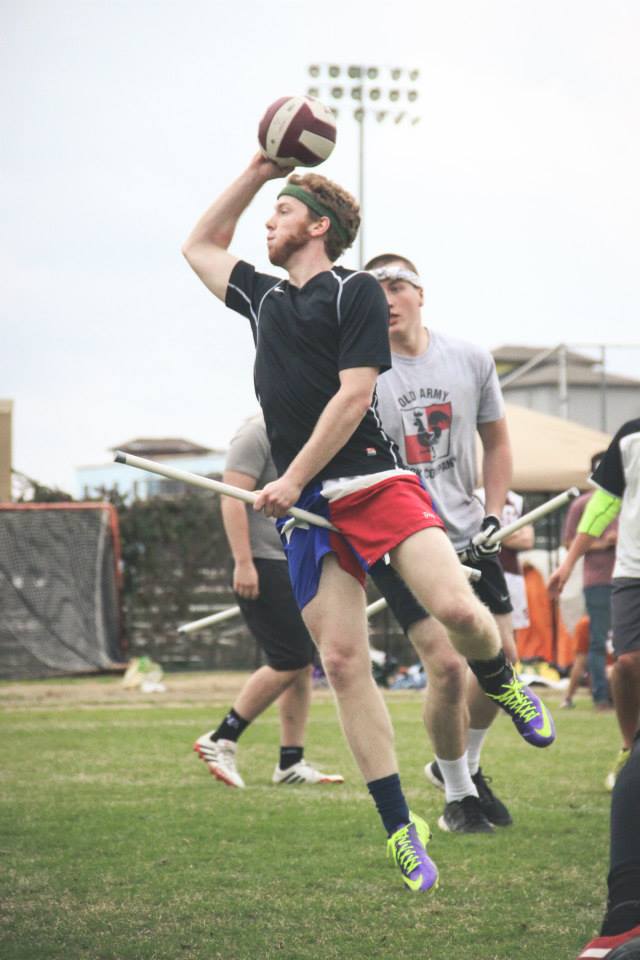
After playing his whole career with Kansas, Connor Drake is finally beginning to get truly comfortable in Lone Star’s style. Credit: Lauren Carter
The team’s stellar chaser lines played as well as anyone could want, but Lonestar’s beaters struggled to maintain bludger control against the top-tier teams. Still, they were up on Texas A&M by 30 points at one point in the semifinals, their best effort of the season against the Aggies.
With Mathieu Gregoire’s transfer having finally gone through, expect to see him beating and chasing, depending on the game situation. Either way, his addition to the team could be just the push this community team needs to finally grab a tournament win, just in time for regionals.
University of Texas-Austin
The reigning world champions are having a tough time this year. Still an elite team, the veterans have yet to fully incorporate their new players into the pragmatic and effective strategy that last year’s team was so well-known for. The Longhorn offense was riddled with dropped passes and turnovers at Diamond Cup, which put more pressure than necessary on their defense, especially in bracket play when the team almost never had control.
While extremely aggressive, the Texas beaters are inexperienced and have yet to master the nuances of the position that top-tier beaters are known for. This lack of bludger control hurt them severely in their game against Baylor, where at one point it seemed like they would rather just inhibit Baylor’s beaters on offense instead of regaining bludger control. While a viable option for offense, it leaves a defense more vulnerable, especially against the fast-break Baylor offense, which tests a team’s transition defense.
Veterans Augie Monroe, Aryan Ghoddossy and Kenny Chilton led the Longhorn charge, and were responsible for a majority of their points in bracket play. Chaser convert Kiki Crawford and female beaters Katy Matz and Christian Dowdle provided a lot of the intelligence and athleticism that Texas’ beaters were known for last year. If Crawford and Dowdle can really utilize their time at the position more effectively, Texas will see itself with bludger control more often.
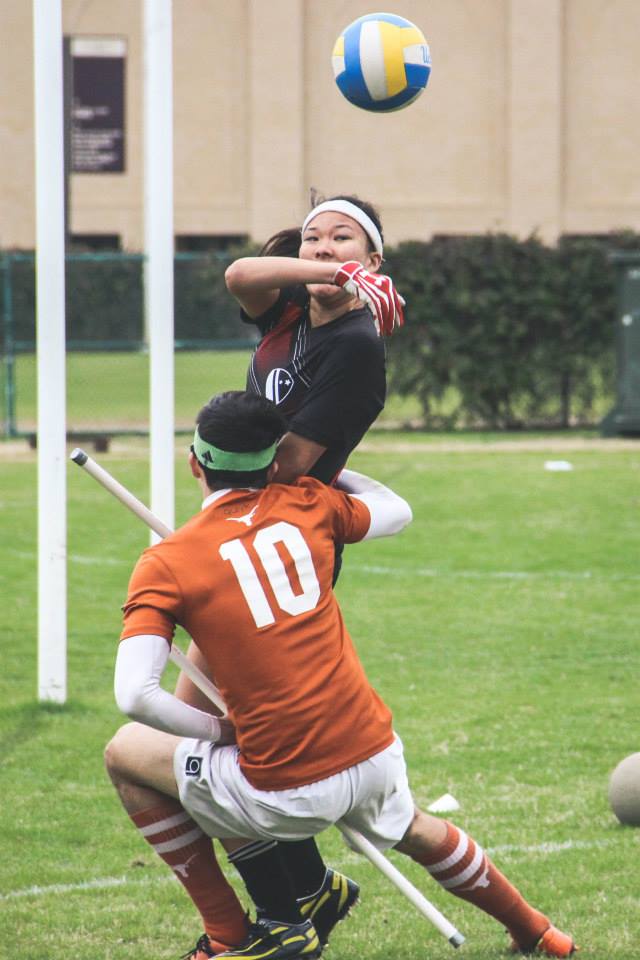
On both offense and defense, Augustine Monroe had to pick up the slack in a sloppy performance from Texas. Credit: Lauren Carter
Texas is definitely a team reminiscent of last year’s legendary group, but they have a lot of work to do if they expect to replicate last year’s results this year in Myrtle Beach.
Texas State University
A team that really surprised me at Diamond Cup, the hosts had a great tournament. In pool play, they dominated the competition and even held Lone Star to within snitch range. But they stumbled in bracket play, with a 160*-10 loss to Texas, in large part due to depth and injury issues.
The Bobcats’ offense was led by Eric Reyes, Tyrell Williams and Rich Kemp, with Kemp making some outstanding plays on defense as well. Texas State’s beaters were talented, but lacked depth, with Ryan Peavler and Beth Clementi playing a majority of the time. They traded bludger control with Lonestar for most of their game, but with Clementi injured, the Texas game in bracket play was fairly one-sided. It’ll be interesting to see how Texas State does at regionals, especially if they draw Arkansas or LSU in their pool, both of which are capable of pulling a potentially upset.
Louisiana State University
LSU has been an inconsistent team this season, with a constantly changing roster from tournament-to-tournament that also seems to contain a lot of streaky players. This can be seen in the film of them against Texas, Lost Boys and Lone Star, as periods of near ineptitude were followed by impressive runs of form.
Brad Armentor was the Greg Jennings of this LSU team, more or less putting the team on his back. With an ankle injury slowing him down, Jake Smith couldn’t be nearly as effective on-or-off ball as he wanted to be, leaving much of the pressure to Armentor. Melissa White was a valuable asset at both beater and chaser, playing extremely well no matter what headband she wore. As a chaser, she connected with Smith and Armentor for solid plays that reminded people of the elite LSU teams of the pass.
Jason Winn and Daniel Depaula are great combinations of aggression and intelligence in the beating game, but there were only a few moments throughout the tournament where it showed. If they can play in a calm manner and not get frustrated, they will be much more successful at future tournaments.
It’s safe to say that, despite a good showing, the Tigers have a lot of work to do if they hope to stay in the conversation of the “Best of the Southwest” come Regionals.
University of Texas-San Antonio

With the team heavily short-handed, Roadrunner quidditch relied heavily on Luke Langlinais and the rest of their chaser corps to keep them in games. Credit: Lauren Carter
Roadrunner Quidditch has been a popular topic of discussion lately, as they’ve gone from a top 10 team almost back to square one. With transfers and injuries plaguing the team, depth is going to be the biggest issue for UTSA come Regionals and World Cup. Much of their lineup is up in the air, as players have been in and out of the program throughout the season for various reasons. Their chasers, led by Cullen Carter, Luke Langlinais and Hunter Turner, will be doing most, if not all, of the heavy lifting on both sides of the ball at regionals, and with their beating core as thin as it’s ever been, exhaustion could lead to a lack of bludger control. I wouldn’t be surprised if we see a more conservative, energy-saving strategy from them in Tulsa in two weeks, to help them get through five pool-play games on Saturday and bracket play on Sunday.
The Lost Boys Quidditch Club
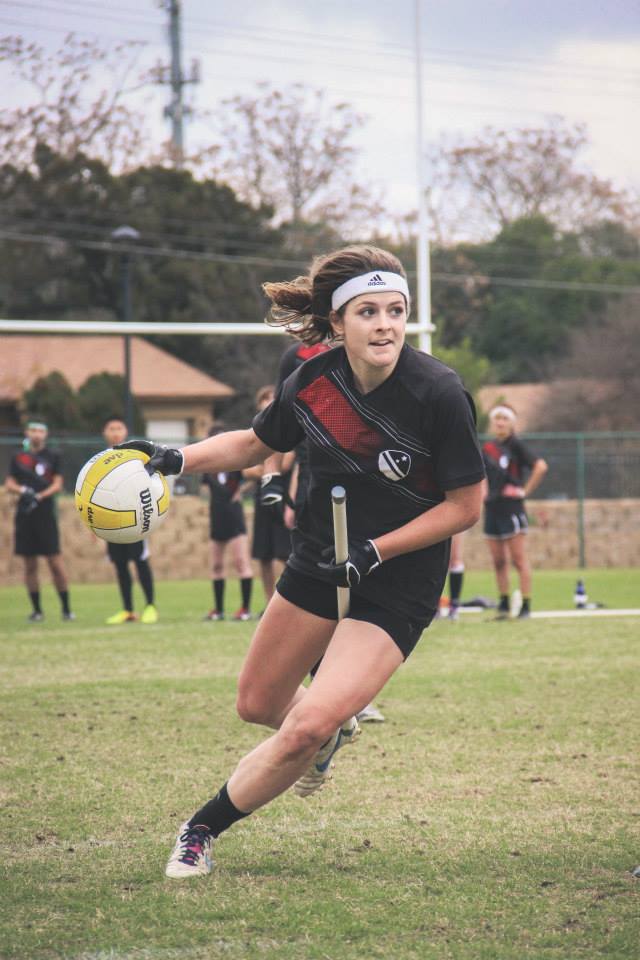
While teammate Vanessa Goh gets much of the attention, Missy Sponagle made a name for herself in the physical Southwest. Crdit: Lauren Carter
If you didn’t leave Diamond Cup as just a little bit of a Lost Boys fan, you’re lying. Their sportsmanship and thirst for competition was matched only by their intelligent and beater-heavy gameplay that constantly had the short-handed team in competition with the sports best. Peter Lee, Chris Seto, and Amanda Nagy combined for arguably the most dominant beater combinations of the tournament, contested perhaps by Baylor and Texas A&M’s beaters. Their strategy changes mid-game were calculated and decisive, playing to the weaknesses of the opposing teams.
One player that caught everyone’s attention was keeper Alex Browne, who started for UCLA until he was injured in the semifinals at World Cup VI. He has found himself in more of an off-ball role this year with Tony Rodriguez ball-handling, and has been effective there due to his speed and height. But, with Tony Rodriguez’s absence, Alex Browne was the main ball carrier for the Lost Boys through Diamond Cup. He performed so well, that I’d argue that he was better for that role at Diamond Cup than Tony would have been, especially in situations without bludger control, which the Lost Boys found themselves in more than they are used to. With the Southwest’s excellent pass coverage and bevy of elite point defenders, I think Tony would have struggled to perform as a ball facilitator on the top level that he is used to. Browne, on the other hand, is physical and a better driver, able to crush through opposing defenses for quick dunks, many of which we saw in the game against Baylor.
Missy Sponagle also made a name for herself, as many Southwest players had no clue who she was. But after an amazing play in which she tackled – not tripped – Kifer Gregoire and stripped the ball, everyone was talking about how talented the Lost Boys’ female players were.
The Lost Boys performed better than anyone imagined, and with the addition of Tony Rodriguez, Jake Tieman and clutch seeker Steve DiCarlo, a finals appearance at World Cup is not out of the question.
